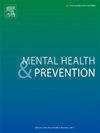Development of the children's wellbeing continuum: Fostering conversation in child mental health
IF 2.4
Q2 Medicine
引用次数: 0
Abstract
Objective: The growing focus on child mental health presents opportunities for prevention and early intervention. A shared, accessible language to describe child mental health that is understood by both parents and professionals across diverse settings is crucial. This study aimed to design and test a novel Children's Wellbeing Continuum tool as a shared communication resource to help adults discuss and reflect on a child's mental health.
Methods: A mixed-methods study was conducted with Australian educators, health professionals, and parents/caregivers. A Delphi consensus study (n = 261) was used to establish consensus on the language for a four-point continuum model. Subsequently, focus groups (n = 69) gathered qualitative feedback on the language, visual elements and utility of the continuum tool across diverse contexts (e.g., schools, primary health care, First Nations Communities).
Findings: The terms “good, coping, struggling, overwhelmed” emerged as the preferred terms for the anchor points along the continuum tool. A traffic-light colour system and accompanying emoticons were supported for visual accessibility. Descriptors of functioning/symptoms were deemed too confusing and excluded from the final version. Inductive content analysis revealed that participants valued the continuum as a tool to facilitate discussions about a child's mental health among stakeholders in the ‘team’ supporting the child.
Conclusions: The Children's Wellbeing Continuum, developed through extensive stakeholder consultation, is designed as a universal early intervention and prevention tool to start a conversation and encourage dialogue about a child's mental health. It has the potential to improve early help-seeking, reduce stigma, and strengthen support systems for children.
儿童健康连续体的发展:促进儿童心理健康方面的对话
目的:对儿童心理健康的日益关注为预防和早期干预提供了机会。至关重要的是,在不同的环境中,父母和专业人员都能理解一种共同的、可理解的语言来描述儿童心理健康。本研究旨在设计和测试一种新颖的儿童健康连续体工具,作为一种共享的沟通资源,帮助成年人讨论和反思儿童的心理健康。方法:对澳大利亚教育工作者、卫生专业人员和家长/照顾者进行了一项混合方法研究。采用德尔菲共识研究(n = 261)建立了四点连续体模型的语言共识。随后,焦点小组(n = 69)收集了关于语言、视觉元素和在不同情况下(例如,学校、初级保健、第一民族社区)使用连续统工具的定性反馈。研究结果:“好”、“应对”、“挣扎”、“不堪重负”成为连续统工具中锚点的首选术语。支持交通灯颜色系统和伴随的表情符号,以方便视觉访问。功能/症状的描述被认为过于混乱,因此被排除在最终版本之外。归纳性内容分析显示,参与者重视连续体作为一种工具,以促进在支持儿童的“团队”中的利益相关者之间讨论儿童的心理健康。结论:儿童健康连续体是通过广泛的利益相关者咨询而开发的,旨在作为一种普遍的早期干预和预防工具,以启动并鼓励有关儿童心理健康的对话。它有可能改善早期求助,减少耻辱感,并加强对儿童的支持系统。
本文章由计算机程序翻译,如有差异,请以英文原文为准。
求助全文
约1分钟内获得全文
求助全文
来源期刊

Mental Health and Prevention
Medicine-Psychiatry and Mental Health
CiteScore
2.10
自引率
0.00%
发文量
22
审稿时长
24 days
 求助内容:
求助内容: 应助结果提醒方式:
应助结果提醒方式:


